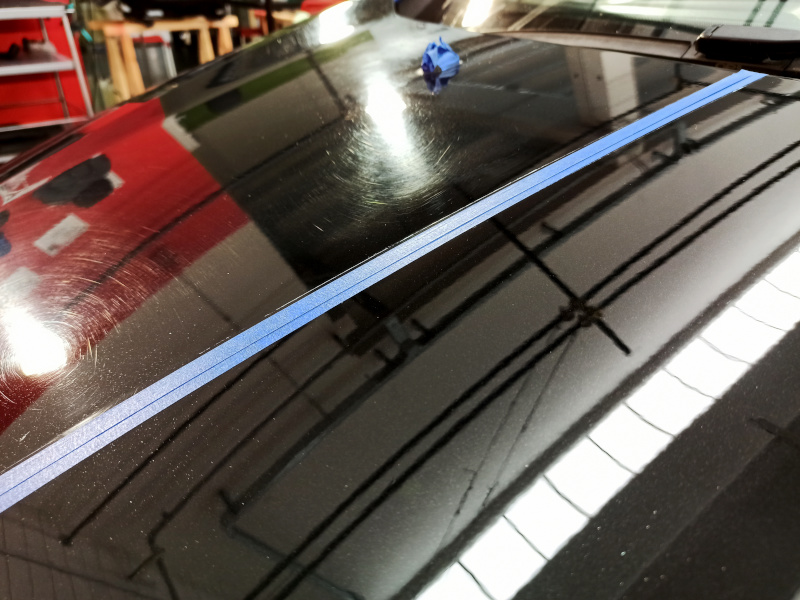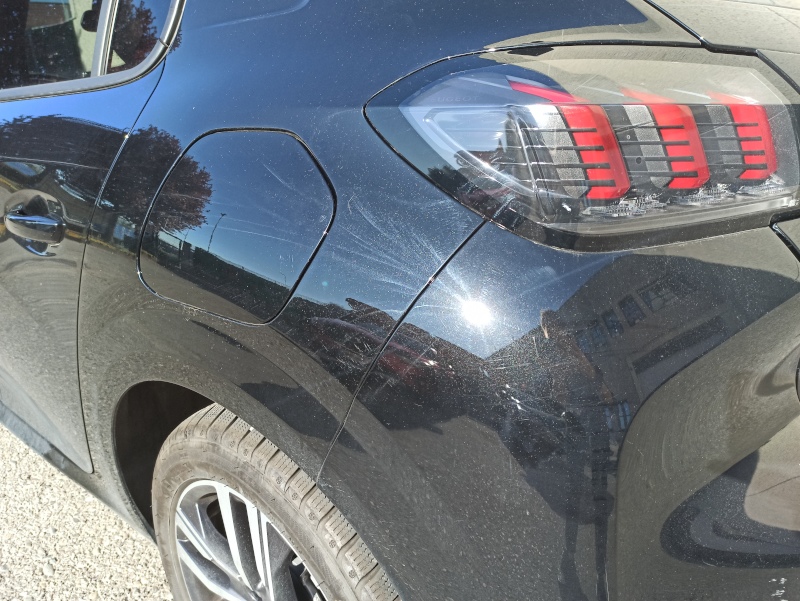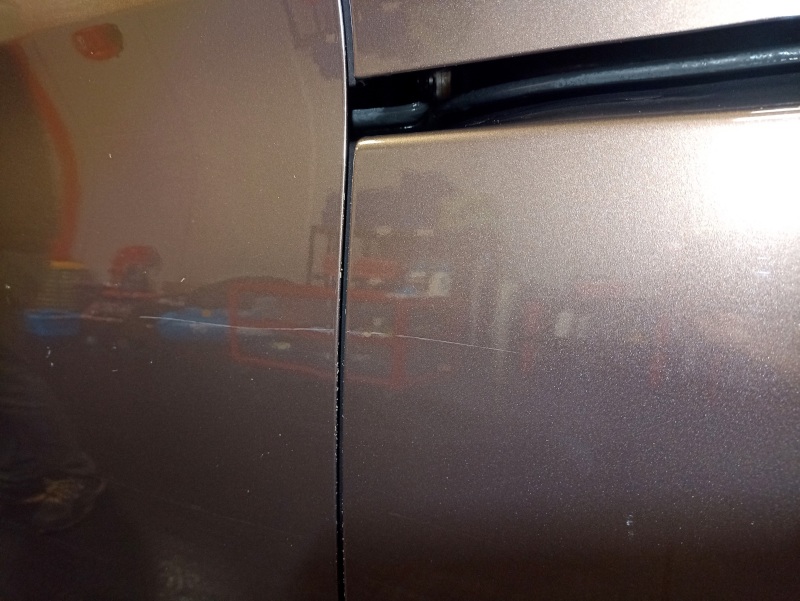- Paint composition
- Types of Scratches and Defects on the Car
- DIY Methods for Light Scratch Removal
- Professional Polishing: The Best Method to Remove Car Scratches From Car
- Prevention of Future Scratches
- Conclusion: What Is the Best Method to Remove Car Scratches From Car?
Maintaining the beauty of your car’s body is the goal of every car enthusiast. The daily use of the vehicle exposes it to the negative effects of weather, pollutants, chemicals, and accidental impacts with debris. All of these contribute to constant deterioration of the body, resulting in dullness, scratches, holograms, and scuffs. In this context, we will try to understand how to remove scratches, imperfections, and protect the final result to preserve the aesthetic appearance and, consequently, the market value of the car over time.
Since each scratch is unique, it is essential to carefully assess its nature before undertaking any repair intervention. Whether you are dealing with superficial scratches caused by debris impact or deeper scratches due to accidents, we will explore the most suitable techniques for each situation to remove scratches from your car. Your car is not just a means of transportation but also an investment. Learning to care for it properly is crucial to maintain its value and aesthetic appearance over time.
Paint composition
[back to table of contents]
Before discussing different types of scratches and defects and various repair methodologies, it is important to observe and understand the composition of the dual-layer paint found on most vehicles:
As we can infer, the clear coat layer is the one that easily deteriorates, being in direct contact with external agents. As long as scratches or damage only affect the clear coat layer, you can remove scratches from your car through a good polishing service. If the scratch or damage reaches the color layer, thus damaging the body paint, the only valid repair method is to paint the damaged part.
Types of Scratches and Defects on the Car
[back to table of contents]
Understanding the different types of scratches and defects your car has is essential to determine the appropriate repair method. In this article, we have decided to distinguish between superficial scratches and defects, and deep scratches and defects:
Superficial Scratches and Defects
These are light scratches and defects that can affect the shine of the paint, ruining the clear coat layer. These types of scratches or defects can be removed through a good polishing service as they do not penetrate deeply and do not damage the paint layer. Below are some common ones:
Swirls:
 These are light scratches visible in sunlight, often caused by poorly maintained automatic car wash brushes or incorrect polishing services. They appear as circular scratches that prevent light from reflecting perfectly on the body.
These are light scratches visible in sunlight, often caused by poorly maintained automatic car wash brushes or incorrect polishing services. They appear as circular scratches that prevent light from reflecting perfectly on the body.
Rids:
 Random Isolated Deeper Scratches – These are more or less deep scratches, usually removable through polishing, but in some cases, a preliminary sanding phase may be required. They appear as random scratches without a specific order, caused by certain circumstances such as belts, buttons, branches, brushes, or dirty car washing tools.
Random Isolated Deeper Scratches – These are more or less deep scratches, usually removable through polishing, but in some cases, a preliminary sanding phase may be required. They appear as random scratches without a specific order, caused by certain circumstances such as belts, buttons, branches, brushes, or dirty car washing tools.
Holograms:
 Usually caused by improper polishing services using wool pads or hard sponge pads, resulting in a set of very fine micro-scratches. Holograms can be easily removed through a good polishing service.
Usually caused by improper polishing services using wool pads or hard sponge pads, resulting in a set of very fine micro-scratches. Holograms can be easily removed through a good polishing service.
Oxidation:
 Represents the deterioration of the body’s shine caused by prolonged exposure to the sun, improper washes using highly aggressive chemicals, and exposure to weather and pollutants. These defects are usually found on older and neglected cars. If the shine layer is not completely compromised, it can be restored through a good polishing service.
Represents the deterioration of the body’s shine caused by prolonged exposure to the sun, improper washes using highly aggressive chemicals, and exposure to weather and pollutants. These defects are usually found on older and neglected cars. If the shine layer is not completely compromised, it can be restored through a good polishing service.
Pigtail scratches:
 Micro-scratches caused by the presence of dirt particles that compromise the polishing or sanding process. These can result from a car not being properly prepared with a good decontaminating wash, using dirty tools like pads or cloths, or working in an unclean environment.
Micro-scratches caused by the presence of dirt particles that compromise the polishing or sanding process. These can result from a car not being properly prepared with a good decontaminating wash, using dirty tools like pads or cloths, or working in an unclean environment.
Sanding Scratches:
 Defect caused by an improper sanding process, where signs left by abrasive paper with a harder grit were not completely eliminated. This defect can generally be recovered through a good polishing service.
Defect caused by an improper sanding process, where signs left by abrasive paper with a harder grit were not completely eliminated. This defect can generally be recovered through a good polishing service.
Stains:
 Stains on the body can be of two types – stains due to the deposit of very calcareous water or stains caused by organic acids, such as bird droppings, resins, and insects, or inorganic substances, meaning chemical and aggressive products. If your body has these types of stains, it means that the stage of these defects is advanced, indicating that the calcareous or acidic substance has penetrated the body’s shine layer. If the stain has not completely consumed the clear coat, you can renew the paint through various polishing steps, using cutting pastes and hard cutting pads.
Stains on the body can be of two types – stains due to the deposit of very calcareous water or stains caused by organic acids, such as bird droppings, resins, and insects, or inorganic substances, meaning chemical and aggressive products. If your body has these types of stains, it means that the stage of these defects is advanced, indicating that the calcareous or acidic substance has penetrated the body’s shine layer. If the stain has not completely consumed the clear coat, you can renew the paint through various polishing steps, using cutting pastes and hard cutting pads.
Deep Scratches and Defects
 These types of scratches and defects permanently damage the body’s shine layer and reach the color layer, meaning the car’s paint layer. These damages can be caused by impacts with harder objects like classic dents or more common damages like impacts on the body from gravel or debris during vehicle driving. In these cases, the only method to remove scratches from your car is through painting the damaged part.
These types of scratches and defects permanently damage the body’s shine layer and reach the color layer, meaning the car’s paint layer. These damages can be caused by impacts with harder objects like classic dents or more common damages like impacts on the body from gravel or debris during vehicle driving. In these cases, the only method to remove scratches from your car is through painting the damaged part.
Knowing the type of scratch/defect you are dealing with is crucial to choose the most suitable method to remove scratches from your car. Approaches vary based on the severity of the damage, allowing for targeted and effective treatment to restore your car’s original beauty.
DIY Methods for Light Scratch Removal
[back to table of contents]
If you are looking for a method that perfectly regenerates the surface, DettaglioAuto advises against using DIY methods, as using unfamiliar techniques can result in ineffective results and the risk of further damaging the surface. Nevertheless, here are some common methods:
- Abrasive Paste
Purchase an abrasive paste capable of removing light scratches.
Apply a small amount on the damaged surface.
Use a soft cloth to massage the compound in circular motions.
Remove excess product with a clean cloth. - Scratch Pen
Purchase a pen whose color matches that of your car.
Apply the color to the damaged area.
Let it dry
Before using any DIY method, it is advisable to test it on a small hidden area to ensure it does not cause additional damage. Remember that these methods do not guarantee satisfactory and lasting results.
Professional Polishing: The Best Method to Remove Car Scratches From Car
The only method capable of permanently removing scratches and damage from the surface is a professional polishing service. Through this service, the vehicle is restored to its original condition through a complete paint restoration.
Here are the phases of our polishing service:
- Nano detailing wash, decontaminating wash to remove all contaminants: limestone, iron residues, rust, tar, and corrosive substances from the body and rims.
- Car masking.
- Three polishing steps, based on the initial conditions of the car, starting from an abrasive step to remove scratches and defects up to the polish.
- Waxing.
- Application of tire black.
- Application of Plastic Restorer to renew the color of the external plastic parts of the car.
To find out more or check the price, visit the dedicated page.
Prevention of Future Scratches
[back to table of contents]
Once the polishing service is completed, we consider it essential to adopt preventive measures to avoid future scratches and defects. At DettaglioAuto, we offer various options for protective coatings on the paint:
Nano Ceramic Protections
 Minimum durability of 2 or 3 years.
Minimum durability of 2 or 3 years.
Provides protection against paint deterioration due to weather, organic/inorganic acids, and pollutants.
Reduces the number of washes and facilitates maintenance and cleaning due to its oleo-hydrophobic and anti-static properties. To discover more, visit the dedicated page, click here.
Protective PPF Film Application
 Our Scudo film has a 10-year duration.
Our Scudo film has a 10-year duration.
Provides protection against scratches and stones through its self-healing feature with the simple heat of the sun.
Protects against chemicals, organic and inorganic acids, pollutants, and UV rays.
Improves water and dirt slip for longer-lasting cleaning and reduces the number of washes, facilitating car maintenance. To discover more, visit the dedicated page, click here.
Conclusion: What Is the Best Method to Remove Car Scratches From Car?
In conclusion, before treating a scratch, it is important to understand its characteristics and severity. We at DettaglioAuto discourage DIY methods as the use of inappropriate techniques combined with a lack of technical experience could worsen the situation and cause even more severe damage.
Furthermore, prevention plays a key role in the long-term maintenance of your car. Ideally, undergo a polishing treatment that restores the original appearance of the paint and follow it with one of our protective services. Choose the one that suits you best between nanotechnological protection or the application of our Scudo PPF films.
Remember that with the right attention and a combination of prevention and targeted interventions, you can keep your car in optimal conditions over time, maintaining its market value.
If you would like to receive a proforma to remove the scratches from your car and protect it, click here.







